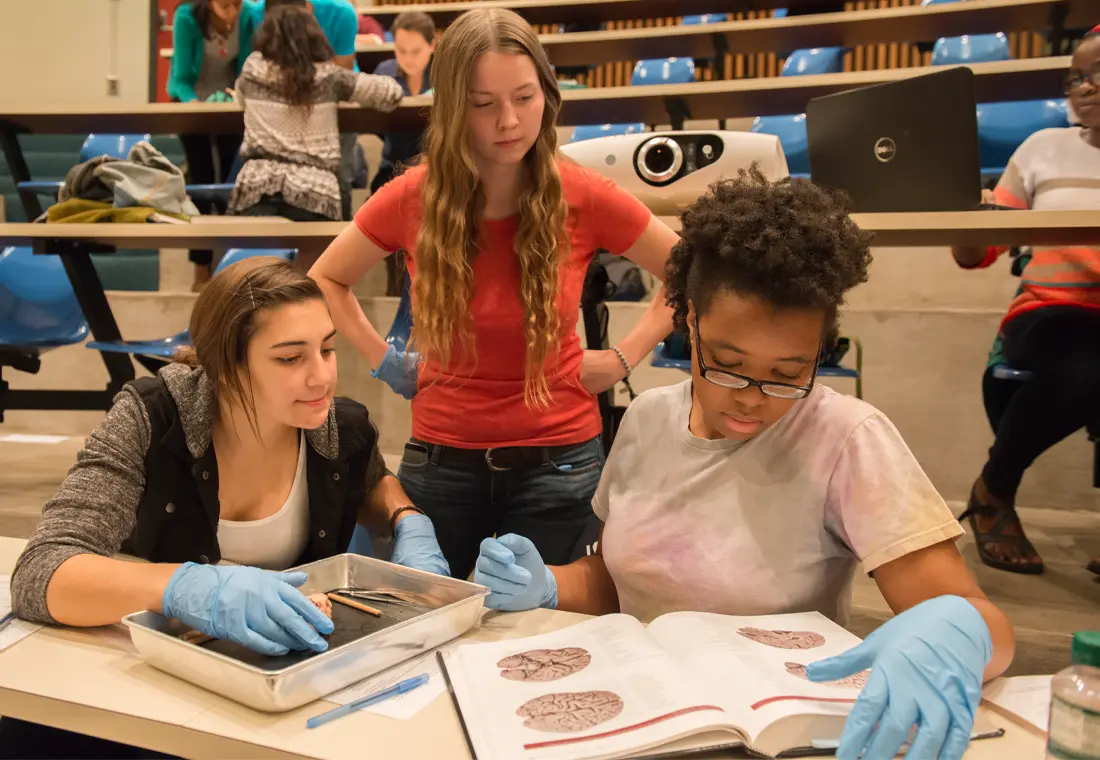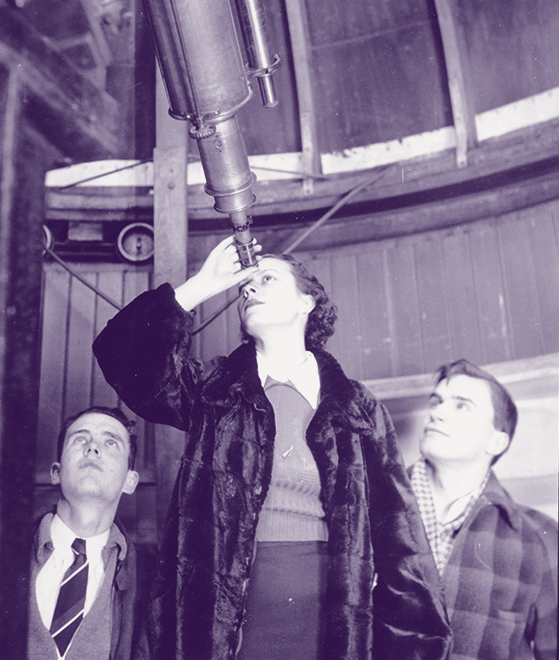

Neuroscience
Immerse yourself in one of the most fascinating and rapidly growing fields in science.
Major or Minor in Neuroscience
Neuroscience research topics recently completed by Knox students include the development of drug and other therapies to help people with brain injury or disease and the exploration of cellular and molecular processes that underlie drug addiction and memory.
Our broad-based curriculum and rich research opportunities will help you gain an understanding of neuroscience with a breadth and depth that will prepare you for graduate and professional school, as well as for positions in the private and public sector. Neuroscience graduates have gone on to doctoral programs at institutions such as University of Southern California, Emory, Duke University, Northwestern University, Cornell University, University of Minnesota, University of Texas-Austin, University of California-Los Angeles, Finch University, and State University of New York-Binghamton.Neuroscience graduates are employed in diverse settings, including research at universities or pharmaceutical companies; medicine as neurologists, clinical neurologists, neurosurgeons, physical therapists, or psychiatrists; policy-making bodies in the government; and the criminal justice system.
The Program
The major and minor in neuroscience integrate behavioral as well as cellular and molecular aspects of neuroscience. The introductory courses cover fundamental principles in biology and chemistry that are needed to understand nervous system functioning. Advanced courses provide opportunities for an immersion in the field of neuroscience, including neurophysiology, neurochemistry, and affective and cognitive neuroscience. Research methods and statistics are covered in courses in either biology, for those with a cellular and molecular focus, or psychology, for students interested in a behavioral focus.As a neuroscience student, you will complete a two-term research experience in which you, under the mentorship of a faculty member, will conduct original neuroscience research. The process includes reviewing literature, generating a hypothesis, collecting and analyzing data, and presenting results in written and oral form.
Resources
Resources for neuroscience include animal colony and animal research facilities; a human neuropsychological laboratory; and facilities for histology and chemical separation. Specific resources include:
- Water maze, radial arm maze, conditioned place preference apparatus, and operant chambers for assessing cognitive/behavioral functioning in nonhumans; ultrasonic microphone for testing vocalizations associated with emotional responding in nonhumans.
- High Performance Liquid Chromatography (HPLC) for detecting neurotransmitters in blood and in brain tissue in nonhumans; equipment for assessment hormone levels in humans.
- Lab for histological preparation of neural tissue; and
- Human psychophysiological lab with electroencephalogram (EEG) and a range of sensors for measure of autonomic nervous system function, e.g., galvanic skin response (GSR), heart rate, respiration rate, electromyogram (EMG), and facial EMG.
Is Knox for you?
Contact us to find out more about our comprehensive majors, minors, and programs.

